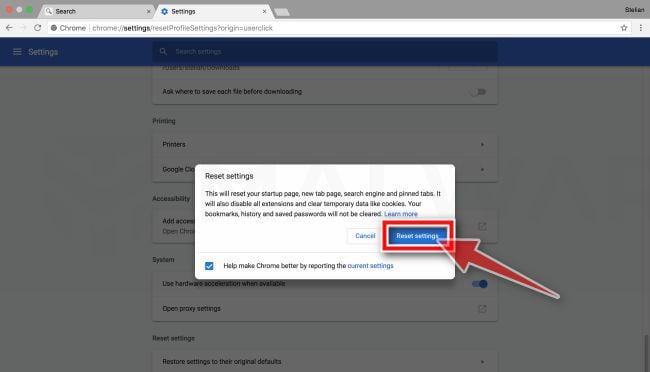

- SET PAGES IN CHROME FOR MAC UPDATE
- SET PAGES IN CHROME FOR MAC CODE
- SET PAGES IN CHROME FOR MAC SERIES
Keep in mind that the throttling is relative to the normal capability of your laptop or desktop. Low-end mobile simulates slow 3G and throttles your CPU 6 times slower than normal.

Mid-tier mobile simulates fast 3G and throttles your CPU so that it is 4 times slower than normal. To throttle the network and CPU, select Mid-tier mobile or Low-end mobile from the Throttle list. Rulers above and to the left of the viewport # Zoom the viewportįigure 15. The sizing unit of the rulers is pixels.įigure 14. The device type field is the list that is set to Mobile by default.Ĭlick More options and then select Show rulers to see rulers above and to the left of your viewport. The device pixel ratio, user agent string, and device type fields are optional. The device frame for the iPhone 6 # Add a custom mobile deviceĬlick the Device list and then select Edit.Įnter a name, width, and height for the device. Note: If you don't see a device frame for a particular device, it probably means that DevTools just doesn't have art for that specific option.įigure 10.

Events fired refers to whether the page fires touch or click events when you interact with the page. Cursor icon refers to what type of cursor you see when you hover over the page. Rendering method refers to whether Chrome renders the page as a mobile or desktop viewport. The table below describes the differences between the options. Use the Device Type list to simulate a mobile device or desktop device. Click a breakpoint to change the viewport's width # Set the device type To show media query breakpoints above your viewport, click More options and then select Show media queries.Ĭlick a breakpoint to change the viewport's width so that the breakpoint gets triggered.įigure 4. The handles for changing the viewport's dimensions when in Responsive Viewport Mode # Show media queries In Figure 2, the width is set to 628 and the height is set to 662.įigure 2. Or, enter specific values in the width and height boxes. # Responsive Viewport Modeĭrag the handles to resize the viewport to whatever dimensions you need. # Simulate a mobile viewportĬlick Toggle Device Toolbar to open the UI that enables you to simulate a mobile viewport.īy default the Device Toolbar opens in Responsive Viewport Mode.
SET PAGES IN CHROME FOR MAC CODE
Use Remote Debugging to view, change, debug, and profile a page's code from your laptop or desktop while it actually runs on a mobile device. When in doubt, your best bet is to actually run your page on a mobile device. For example, the architecture of mobile CPUs is very different than the architecture of laptop or desktop CPUs. There are some aspects of mobile devices that DevTools will never be able to simulate. You simulate the mobile user experience from your laptop or desktop. With Device Mode you don't actually run your code on a mobile device. Think of Device Mode as a first-order approximation of how your page looks and feels on a mobile device.
SET PAGES IN CHROME FOR MAC SERIES
To change this behavior, simply repeat the steps and select Safari in the Default Browser Apps screen.Īs of writing, no other third-party web browser provides an option to set it as the default browser for the iOS, but give it some time and the option will surely arrive for Firefox, Opera, and others.Īpple is expected to release iOS 14 and iPadOS 14 for all users later this month, and we could even see them announced next week at Apple's " Time Flies" event on Tuesday, September 15, where it is expected to announce the Apple Watch Series 6 and new iPads.Use Device Mode to approximate how your page looks and performs on a mobile device.ĭevice Mode is the name for the loose collection of features in Chrome DevTools that help you simulate mobile devices.
SET PAGES IN CHROME FOR MAC UPDATE
Download the latest version of Google Chrome from the App Store or update the app if you already have it.Īfter you've completed these steps, any app that tries to open a web page will launch Chrome instead of Safari.Note that these steps will only work if you have iOS 14 or iPadOS 14 installed. The latest version of Google Chrome now supports this ability, so anyone on iOS 14 can set Google's app as their default browser and it will be used to automatically open web page links that are tapped in other apps. Apple made a change in iOS 14 and iPadOS 14 that enables third-party browsers and email clients to be used as default apps, meaning users who don't get on with Safari or Apple's native Mail app can choose an alternative and it will be opened automatically whenever the system requires it.


 0 kommentar(er)
0 kommentar(er)
